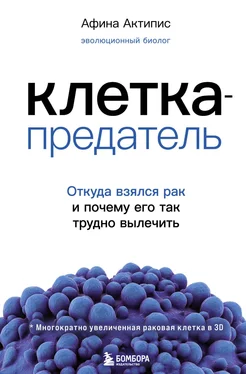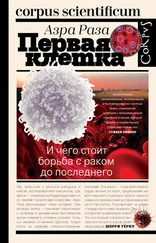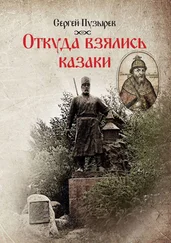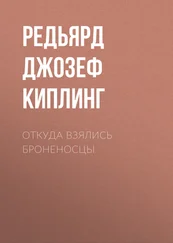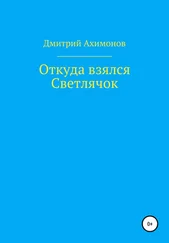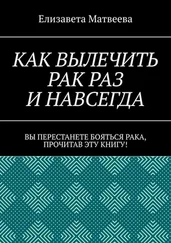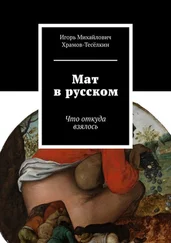Muñoz, Nubia, Xavier Castellsagué, Amy Berrington de González, and Lutz Gissmann. “Chapter 1: HPV in the Etiology of Human Cancer”. Vaccine 24, suppl. 3 (August 2006): S3/1–10.
Murchison, E. P. “Clonally Transmissible Cancers in Dogs and Tasmanian Devils”. Oncogene 27, suppl. 2 (December 2008): S19– S30.
Murgia, Claudio, Jonathan K. Pritchard, Su Yeon Kim, Ariberto Fassati, and Robin A. Weiss. “Clonal Origin and Evolution of a Transmissible Cancer”. Cell 126, no. 3 (August 2006): 477–87.
Nahta, Rita, Dihua Yu, MienChie Hung, Gabriel N. Hortobagyi, and Francisco J. Esteva. “Mechanisms of Disease: Understanding Resistance to HER2Targeted Therapy in Human Breast Cancer”. Nature Clinical Practice Oncology 3, no. 5 (May 2006): 269–80.
National Cancer Institute. “NCI Dictionary of Cancer Terms”. Просмотрено 2 февраля 2011 года. https://www.cancer.gov/publications/dictionaries/cancer-terms.
Nesse, Randolph M. “Natural Selection and the Regulation of Defenses: A Signal Detection Analysis of the Smoke Detector Principle”. Evolution and Human Behavior 26, no. 1 (2005): 88–105.
Noë, Ronald, and Peter Hammerstein. “Biological Markets: Supply and Demand Determine the Effect of Partner Choice in Cooperation, Mutualism and Mating”. Behavioral Ecology and Sociobiology 35, no. 1 (1994): 1–11.
Nougayrède, JeanPhilippe, Stefan Homburg, Frédéric Taieb, Michèle Boury, Elzbieta Brzuszkiewicz, Gerhard Gottschalk, Carmen Buchrieser, Jörg Hacker, Ulrich Dobrindt, and Eric Oswald. “Escherichia Coli Induces DNA DoubleStrand Breaks in Eukaryotic Cells”. Science 313, no. 5788 (August 2006): 848–51.
Nowell, Peter C. “The Clonal Evolution of Tumor Cell Populations”. Science 194, no. 4260 (1976): 23–28.
Nunney, Leonard. “Lineage Selection and the Evolution of Multistage Carcinogenesis”. Proceedings of the Royal Society of London, Series B 266, no. 1418 (March 7, 1999): 493–98.
Nunney, Leonard, Carlo C. Maley, Matthew Breen, Michael E. Hochberg, and Joshua D. Schiffman. “Peto’s Paradox and the Promise of Comparative Oncology”. Philosophical Transactions of the Royal Society of London, Series B: Biological Sciences 370, no. 1673 (July 2015). https://doi.org/10.1098/rstb.2014.0177.
Odes, Edward J., Patrick S. RandolphQuinney, Maryna Steyn, Zach Throckmorton, Jacqueline S. Smilg, Bernhard Zipfel, Tanya N. Augustine, Frikkie de Beer, et al. “Earliest Hominin Cancer: 1. 7MillionYearOld Osteosarcoma from Swartkrans Cave, South Africa”. South African Journal of Science 112, no. 7/8 (July 2016). https://doi.org/10.17159/sajs.2016/20150471.
Office for National Statistics. “ Causes of Death over 100 Years”. September 18, 2017. https://www.ons.gov.uk/peoplepopulationandcommunity/birthsdeathsandmarriages/deaths/articles/causesofdeathover100years/20170918.
Olson, Peter D., Kristine Yoder, Luis F. Fajardo, Aileen M. Marty, Simone van de Pas, Claudia Olivier, and David A. Relman. “Lethal Invasive Cestodiasis in Immunosuppressed Patients”. Journal of Infectious Diseases 187, no. 12 (June 2003): 1962–66.
Oronsky, Bryan, Corey A. Car ter, Vernon Mackie, Jan Scicinski, Arnold Oronsky, Neil Oronsky, Scott Caroen, Christopher Parker, Michelle Lybeck, and Tony Reid. “The War on Cancer: A Military Perspective”. Frontiers in Oncology 4 (2014): 387.
Pal, Tuya, David Keefe, Ping Sun, Steven A. Narod, and Hereditary Breast Cancer Clinical Study Group. “Fertility in Women with BRCA Mutations: A Case-Control Study”. Fertility and Sterility 93, no. 6 (April 2010): 1805–8.
Pardoll, Drew M. “The Blockade of Immune Checkpoints in Cancer Immunotherapy”. Nature Reviews Cancer 12, no. 4 (March 2012): 252–64.
Parvinen, Kalle. “Evolutionary Suicide”. Acta Biotheoretica 53, no. 3 (2005): 241–64.
Penn, I., C. G. Halgrimson, and T. E. Starzl. “De Novo Malignant Tumors in Organ Transplant Recipients”. Transplantation Proceedings 3, no. 1 (March 1971): 773–78.
Pepper, John W. “Drugs That Target Pathogen Public Goods Are Robust against Evolved Drug Resistance”. Evolutionary Applications 5, no. 7 (November 2012): 757–61.
Perri, Angela, Chris Widga, Dennis Lawler, Terrance Martin, Thomas Loebel, Kenneth Farnsworth, Luci Kohn, and Brent Buenger. “New Evidence of the Earliest Domestic Dogs in the Americas”. bioRxiv, June 27, 2018. https://doi.org/10.1101/343574.
Pesavento, Patricia A., Dalen Agnew, Michael K. Keel, and Kevin D. Woolard. “Cancer in Wildlife: Patterns of Emergence”. Nature Reviews Cancer 18, no. 10 (October 2018): 646–61.
Peto, R., F. J. Roe, P. N. Lee, L. Levy, and J. Clack. “Cancer and Ageing in Mice and Men”. British Journal of Cancer 32, no. 4 (October 1975): 411–26.
Peto, Richard. “Epidemiology, Multistage Models, and Short-term Mutagenicity Tests”. International Journal of Epidemiology 45, no. 3 (1977): 621–37.
Pfister, G. “Multisensor/Multicriteria Fire Detection: A New Trend Rapidly Becomes State of the Art”. Fire Technology 33, no. 2 (May 1997): 115–39.
Pierce, Robert A., II, Jason Sumners, and Emily Flinn. “Antler Development in WhiteTailed Deer: Implications for Management”. University of Missouri Extension, January 2012. https://extension2.missouri.edu/g9486.
Proksch, Ehrhardt, Johanna M. Brandner, and JensMichael Jensen. “The Skin: An Indispensable Barrier”. Experimental Dermatology 17, no. 12 (December 2008): 1063–72.
Pye, Ruth J., David Pemberton, Cesar Tovar, Jose M. C. Tubio, Karen A. Dun, Samantha Fox, Jocelyn Darby, et al. “A Second Transmissible Cancer in Tasmanian Devils”. Proceedings of the National Academy of Sciences of the United States of America 113, no. 2 (January 2016): 374–79.
Quinlan, Robert J., and Marsha B. Quinlan. “Evolutionary Ecology of Human Pair-Bonds: Cross-Cultural Tests of Alternative Hypotheses”. Cross-Cultural Research 41, no. 2 (May 2007): 149–69.
Rankin, Erinn B., and Amato J. Giaccia. “Hypoxic Control of Metastasis”. Science 352, no. 6282 (April 2016): 175–80.
Read, Andrew F. “The Selfish Germ”. PLoS Biology 15, no. 7 (July 2017): e2003250.
Rebbeck, Clare A., Rachael Thomas, Matthew Breen, Armand M. Leroi, and Austin Burt. “Origins and Evolution of a Transmissible Cancer”. Evolution: International Journal of Organic Evolution 63, no. 9 (September 2009): 2340–49.
Reik, Wolf, Miguel Constância, Abigail Fowden, Neil Anderson, Wendy Dean, Anne FergusonSmith, Benjamin Tycko, and Colin Sibley. “Regulation of Supply and Demand for Maternal Nutrients in Mammals by Imprinted Genes”. Journal of Physiology 547, pt. 1 (February 2003): 35–44.
Robey, Ian F., Brenda K. Baggett, Nathaniel D. Kirkpatrick, Denise J. Roe, Julie Dosescu, Bonnie F. Sloane, Arig Ibrahim Hashim, et al. “Bicarbonate Increases Tumor pH and Inhibits Spontaneous Metastases”. Cancer Research 69, no. 6 (March 2009): 2260–68.
Rogozin, Igor B., and Youri I. Pavlov. “Theoretical Analysis of Mutation Hotspots and Their DNA Sequence Context Specificity”. Mutation Research 544, no. 1 (September 2003): 65–85.
Rosalie, David A., and Michael R. Zimmerman. “Cancer: An Old Disease, a New Disease or Something in Between?” Nature Reviews Cancer 10, no. 10 (2010): 728–33.
Rosenberg, S. M. “Evolving Responsively: Adaptive Mutation”. Nature Reviews Genetic s 2, no. 7 (July 2001): 504–15.
Rothschild, Bruce M., Brian J. Witzke, and Israel Hershkovitz. “Metastatic Cancer in the Jurassic”. Lancet 354, no. 9176 (July 1999): 398.
Rothwell, Peter M., F. Gerald R. Fowkes, Jill F. F. Belch, Hisao Ogawa, Charles P. Warlow, and Tom W. Meade. “Effect of Daily Aspirin on Long-term Risk of Death due to Cancer: Analysis of Individual Patient Data from Randomised Trials”. Lancet 377, no. 9759 (January 2011): 31–41.
Читать дальше
Конец ознакомительного отрывка
Купить книгу
